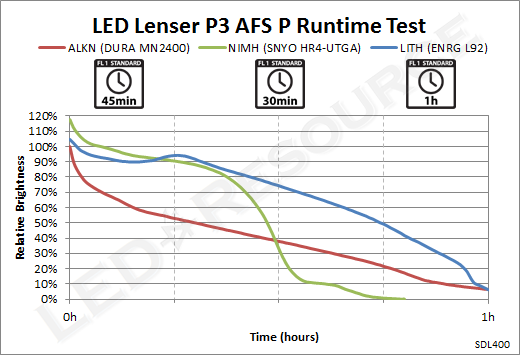Theelite1x87
Newly Enlightened
- Joined
- Dec 6, 2017
- Messages
- 3
I've tried googling and browsing forum but never found a good explanation for my issue. I got brand new and relatively recent eneloop (standard not pro) triple A batts. I went to put them into my husky aluminum flashlight. A smaller one, 140 lumens I think. Uses 3 triple A batts. I wanted to do a runtime test between the eneloop and some harbor freight brand alkalines. Used meter to check all eneloop were sitting at 1.35v (just charged from Panasonic branded advanced charger). Alkalines were fresh and unused. I noticed after about 30mins of running the flashlight was fairly warm to touch with eneloop. Even warmer after an hour. Not enough to worry, it's aluminum after all. But still I noted it. Light was still same brightness. After 90minutes light was noticeably weak. Batteries tested at just over 1v each. Tested alkalines and light never got warm....huh? Same brightness. And after 2 and a half hours light was still bright. Tested the alkalines after that time and they still say around 1.3v each, so used but still had life left. Can someone tell me what the explanation is here? I'd prefer to use my rechargeable batts in my lights but I'm Not Sure why light (or it was probably the batts....) got noticeably warm and had much shorter run time. For what it's worth I did rhis test with brand new eneloop I just bought a few weeks back but I retested with 3 year old eneloop cells and got similar results.


